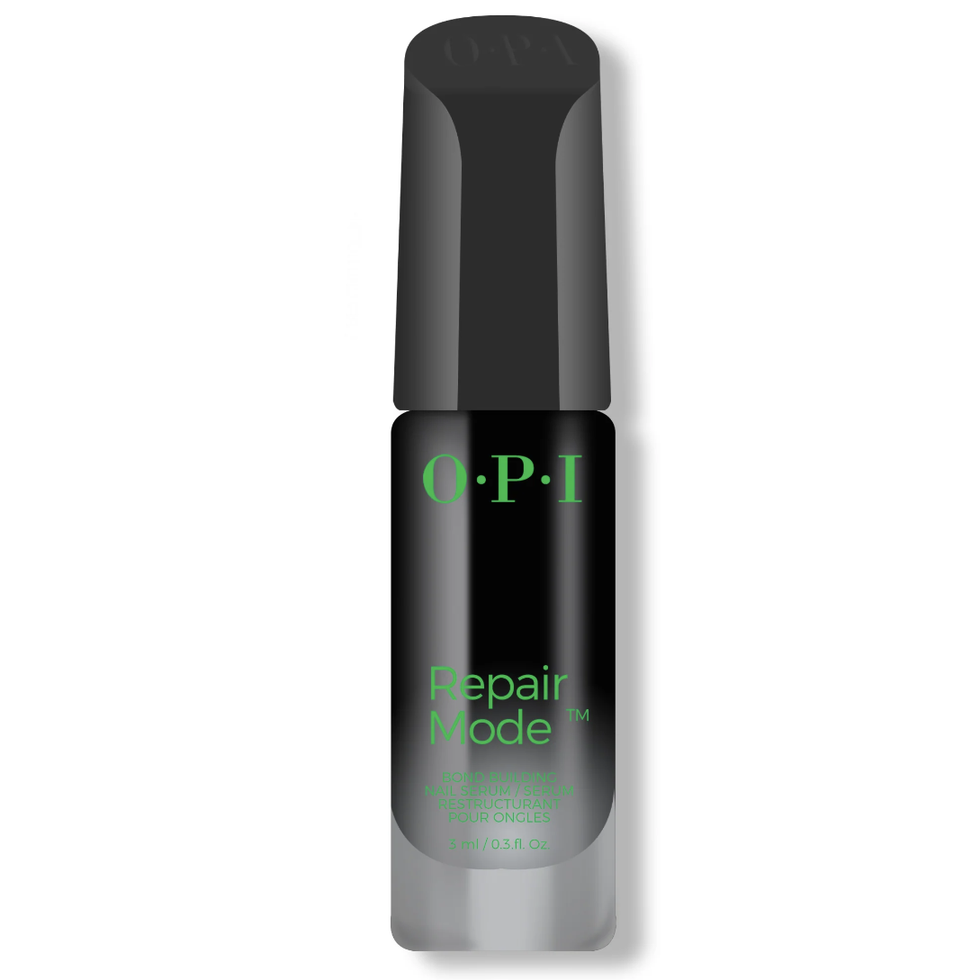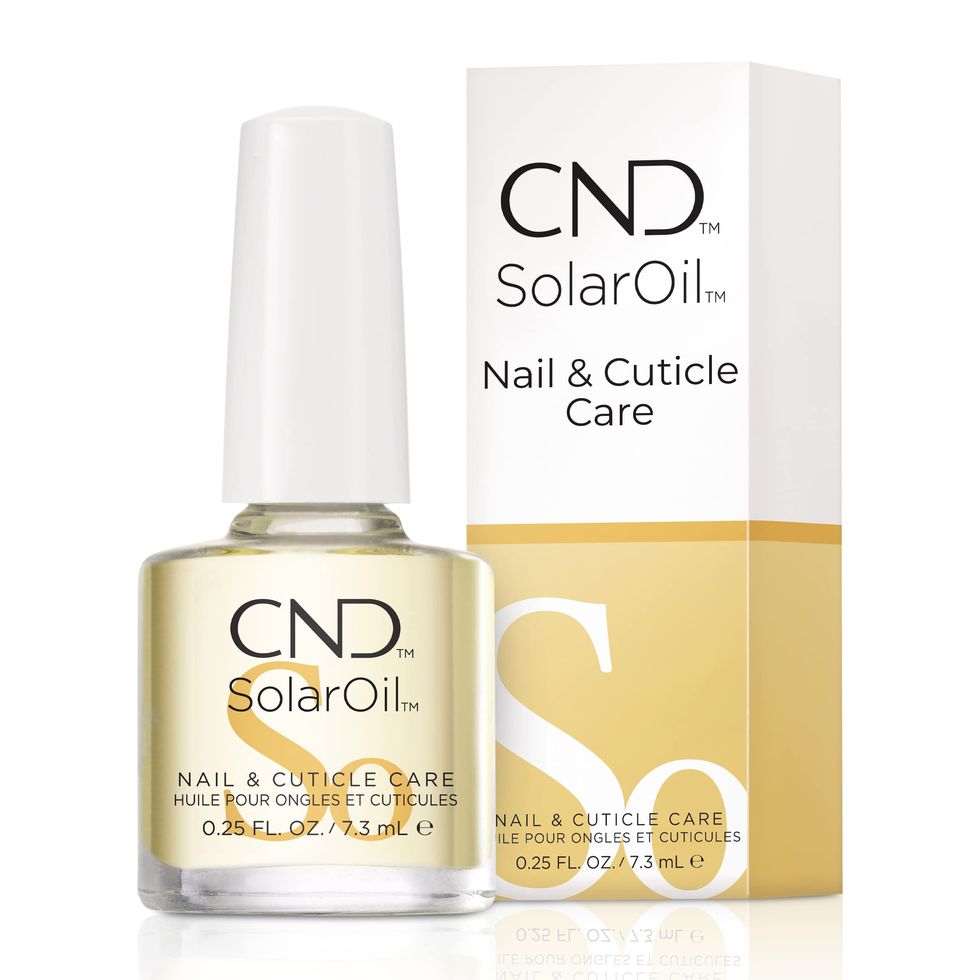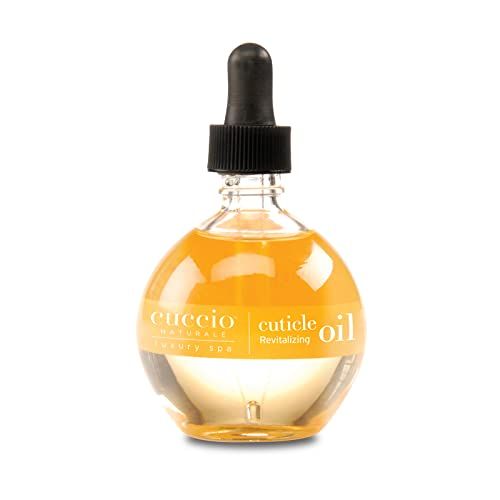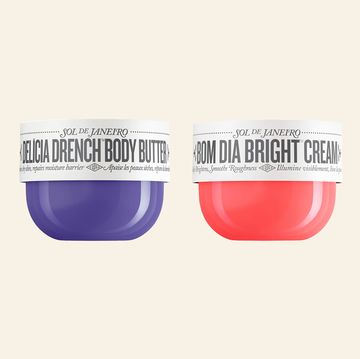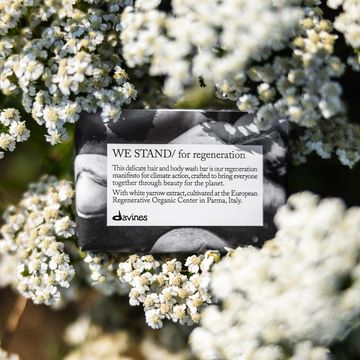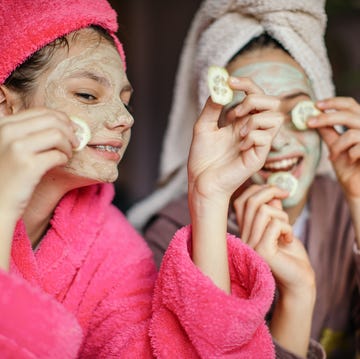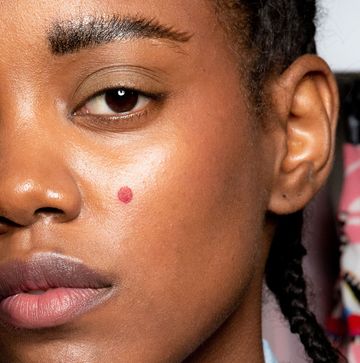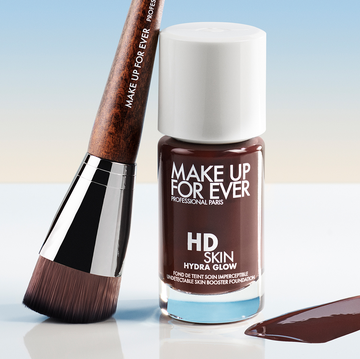There’s a good chance that you’re familiar with gel nail polish and acrylic nails, but there’s another long-lasting option that you might be overlooking. Dip powder nails are a great option for anyone who wants a manicure that won’t budge at all. These manicures, also called SNS (short for Signature Nail Systems), are having a major moment right now, and if you’re looking to switch up your go-to manicure M.O., they’re worth your attention.
What is it like to get a dip powder manicure?
The dip powder manicure process is fairly simple. Every nail technician might have a slightly different technique, but here are the general steps of getting a dip powder manicure.
1. Prep the nails. Your technician will remove any existing nail polish using acetone. Next, they might use a buffing machine or file to smooth out any rugged areas on the nail and create a clean canvas for the powder to stick to. After cutting and shaping the nail and pushing back the cuticles, the technician will apply a primer primer, then swipe on a clear polish.
2. Apply the dip. A technician will apply clear, finely-milled powder to the nails, brush off the excess powder, set it with a clear protective polish, and repeat these steps until the nail is fully coated and hardened.
3. Set the dip. The technician will seal each nail with a gel top coat and place your hands under a fan dryer. You can expect the process to take about an hour and a half.
Is dip powder healthier than gel manicures, and what are the pros and cons of each?
“They are similar in that both provide an extra layer of protection to natural nails,” says licensed nail technician Harli G. “Dip nails don’t require UV light and are typically a much quicker process to apply from start to finish.” A 2023 study found that UV lamps may pose a health risk, so dip nails can ensure you avoid unnecessary exposure to UV light.
Dip can look thicker on nails than gel. “Gel nails tend to look a bit more natural on the nails than dip powder,” says Harli G.
When getting a dip manicure, hygiene is another important thing to consider. “Dips carry greater risk of infection as the dipping powder comes in contact with your skin and is then reused on another person,” says Dr. Azadeh Shirazi, a dermatologist based in California.
To avoid this potential cross-contamination, make sure you go to a nail salon that pours the dip onto your nails rather than dipping your fingers directly in the powder. “Even pouring the product over multiple clients’ nails and allowing the product powder to fall back into the container is an easy way for nail infections to be passed between clients,” says Lily, a nail technician at @zilythenailbar.
Can you DIY dip nails?
While nail dip powder seems harmless, they still contain harsh chemicals that pose a health risk. “I would never recommend doing either of these treatments as a DIY at home because, for both treatments, there are chemical products that can harm skin or the nail plate if not properly applied. Even professional-grade products and products marketed for at-home use contain harmful chemicals, so it’s just safer to go to a professional for both gel and dip treatments,” Harli advises. When in doubt, err on the side of safety.
How long do dip manicures last?
As a result, nail dip manicures can be cost and time effective. “For busier clients, dip powder is a great option as they last three weeks or longer, depending on the level of at-home care after the manicure,” Lily tells us. This is almost twice the longevity of your standard gel manicure.
Do all salons offer dip powder?
Many salons offer dip powder in a variety of different colors and finishes. Check your salon before you make an appointment.
Can you get dip extensions?
For years, people have gravitated towards acrylics to achieve long nails. Dip powder still allows nail techs to extend the nail’s length. In fact, “dip powder is more lightweight than acrylic, which allows it to wear and tear better and last longer,” Lily shares. Once the nail tech adds fake nail tips, they will file the nail down to the requested shape, and then use the “dip” technique to apply a thin layer of colored powder to the nail.
How do you remove dip manicures?
Dip manicures can be harsh on your nails—to minimize the impact, don’t try to remove your manicure yourself. “With all nail enhancements, there’s a risk of your nail plates becoming dehydrated and brittle. The removal process is crucial. In my experience, most issues with poor natural nail health result from nail enhancements, particularly dip nails, and stem from attempts to DIY removal at home. It is always safest to go back to the salon and have a licensed professional remove any product for you,” Harli emphasizes. We know picking at a manicure is tempting, but it’s just not worth the health consequences, plain and simple.
How should you take care of your dip manicure?
Outside of your manicure, being thoughtful and gentle towards your hands goes a long way. “Excess exposure to chemicals such as those found in household cleaners can lead to weakened enhancements or brittle natural nails. I always recommend wearing protective gloves to protect the enhancement, your natural nails, and the surrounding skin from weakening, which could lead to painful breakage. Restoring hydration after the treatment and during the wear time will help you avoid any mishaps from dip powder enhancements. Try to apply cuticle oils and high-quality moisturizers multiple times a day,” Harli suggests. We all know how important moisturizing is, so ensure your hands get the same treatment. Thankfully, we’ve done the research for you. Behold, the best nails serums on the market:

